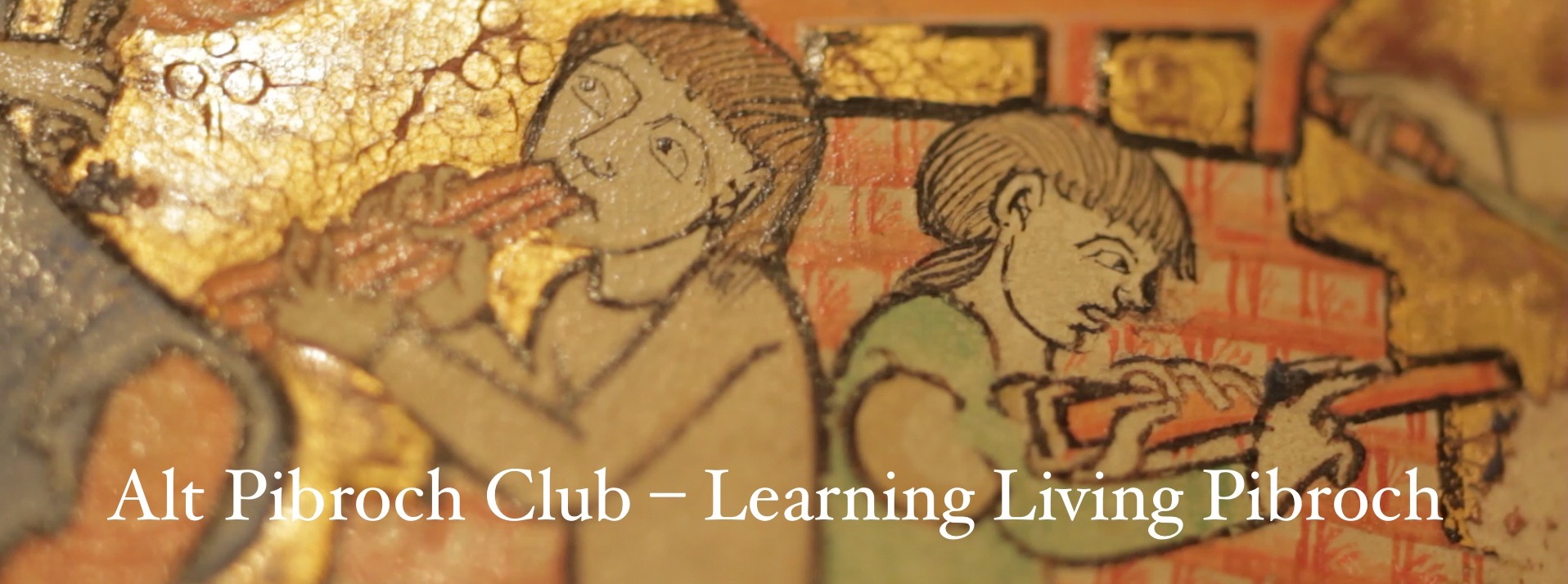Cadences are optional.
Ignore them. Leave them out. Distill the score to its thematic essence. Understand this essence. Be capable of singing this essential song* core.
It is remarkable, and noteworthy, that very few students can extract the core melodic structure of a pibroch urlar. For many, the cadences have become the melody, a fallout of the dominance of MacKay-style held-e cadences.
Given that the various scores show not only the various ways cadences can be played, but show a variety of their frequency, it is clear that, though important to the interpretive shaping of a performance, they were optional interpretive elements to be used by the interpreter to give shape to the performance.
Anyone who says otherwise is simply wrong. And anyone who insists on a literal reading of them, who insists on playing them “consistently”, fundamentally misunderstands them.
It becomes imperative, therefore to remove them from consideration when learning the urlar: Get back to the core melody. Sing the melody without them, and get a sense of the rhythm and feel of it.
Later, introduce them when you understand why and how you want to embellish and emphasize a particular note, highlight a particular part of the tune, give drama to a particular phase. Once you reach this phase, you will be able to decide for yourself whether a held, or a tripping, or a steaming cadence best serves your interpretive intent.
Or, if you decide to rely on a particular score and its cadences, you will now understand their role in supplementing and uplifting the melodic core.
The most effective way of doing that, of understanding their correct and powerful role in pibroch, is by learning the tune without them.

“Anyone who says otherwise is simply wrong.”
This statement kind of goes against what I’ve come to think this site was all about.
I would suggest this: there IS a “right” way and a “wrong” way to play cadences. Only, it is not what you think.
The “wrong” way by which to discuss cadences is the way many of us (including myself) have spent a lot of time arguing over them: whether and how long to hold an E, etc. This way tends to reflect a focus upon the surface of the tune, and rarely gets contexualized into the deeper, more important and interesting issue of the music beneath the score. We say things like, “Well, that’s the way I was taught,” which is not exactly a phrase that encourages exploration, really.
While I admit to being hyperbolic, I am intending to make a point: There is a “right” way to view cadences - it is to understand them as movements intended to serve the melody, enhance it and help you as a communicator/performer succeed in getting across your interpretation.
This is different from saying “a held-E cadence is always wrong”, or “a streaming cadence is always right.” In this respect, it isn’t a question of which one is “right” or “wrong”, but whether and to what extent a certain style of cadence helps you give shape to the underlying melody.
So, start at the beginning: get back to the music behind the score, the melody behind the tune, the song behind the pibroch. To do so, I recommend tossing out the cadences, getting rid of them so they do not distract from the necessary work your way to the core.
Once you understand that core song*, then bring them back and use them with the greater understanding you now have.
To do otherwise is to miss the point of their purpose and to misconstrue their musical power.